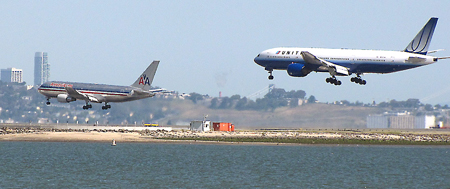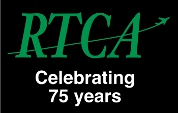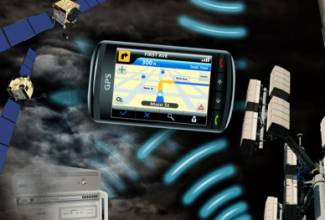
An executive summary of a special report by RTCA Inc. Special Committee 159 released today (May 27, 2011) indicates that GPS aviation receivers would experience serious interference from transmission planned by LightSquared in the upper portion of the 1525–1559 MHz spectrum adjacent to the GPS L1 band.
An executive summary of a special report by RTCA Inc. Special Committee 159 released today (May 27, 2011) indicates that GPS aviation receivers would experience serious interference from transmission planned by LightSquared in the upper portion of the 1525–1559 MHz spectrum adjacent to the GPS L1 band.
Conducted in response to a request from the Federal Aviation Administration (FAA) to address the issue of compatibility between the operation of a terrestrial wireless broadband network, the study concludes that “the current LightSquared terrestrial authorization [from the Federal Communications Commission, FCC] would be incompatible with the current aviation use of GPS. . . .”
Among the RTCA SC159 recommendations was the following: “From an aviation perspective, LightSquared upper channel operation should not be allowed.” The full report will be delivered to the FAA next Friday.
Changes in the LightSquared spectrum allocation plan or expensive modifications in aviation equipment, however, could enable the system to co-exist with aviation use of GPS, according to the executive summary.
RTCA is a private, not-for-profit corporation that develops consensus-based recommendations regarding communications, navigation, surveillance, and air traffic management (CNS/ATM) system issues. RTCA functions as a Federal Advisory Committee and its recommendations are used by the FAA as the basis for policy, program, and regulatory decisions and by the private sector as the basis for development, investment, and other business decisions.
Although not part of the working group (WG) set up under the FCC order to assess the risk of LightSquared interference on GPS, the SC159 analysis was based on the same tests conducted by Zeta Associates and supervised by the FAA as part of the technical work group activities supporting the FCC WG.
The report implicitly indicates that non-aviation receivers — comprising the overwhelming majority of GPS equipment in the field — face an even bigger challenge from LightSquared, because aviation receivers build in a six-decibel safety margin as standard practice. Moreover, the tests assumed that the base stations would operate using LightSquared’s current “operational parameters” of 32 decibel/watts (dBw) of power per channel, not the 42 dBw authorized by the FCC.
Based on tests of four FAA-certified aviation receivers — out of approximately 50 models now being flown on board aircraft in the national air space — and, the effects of a five-megahertz-wide transmission from a single-city base station deployment at the upper end of the LightSquared allocation “is expected to be complete loss of GPS receiver function.”
Given the size of the planned deployment, “GPS-based operations below about 2000 feet will be unavailable over a large radius from the metro deployment center (assuming no other metro deployments are nearby),” the executive summary stated. “Given the situation in the high altitude U.S. East Coast scenario, GPS-based operations will likely be unavailable over a whole region at any normal aircraft altitude.”
LightSquared’s current plan as submitted to the FCC, which issued an order in January authorizing a waiver of limits on the ancillary terrestrial component (ATCs) for the system, calls for an initial five-megahertz channel at the upper range (centered at 1552.7 MHz) during the so-called Phase 0. This would be followed in LightSquared’s Phase 1 by another transmission at the lower range (1526.5 – 1531.5 MHz), and a further widening of both channels to 10 megahertz in Phase 2.
Under LightSquared’s current plan, up to 40,000 ATC base stations would be built across the United States.
The results of the study indicate that terrestrial base station operation at the lower 5 MHz wide channel (1526.5 – 1531.5 MHz) “is compatible with aviation GPS operations for all the representative scenarios (including both signal tracking and initial acquisition).” As for terrestrial base stations using only the lower 10-megahertz channel at 1526-1536 MHz, “a small positive margin” exists “for GPS tracking (but not necessarily initial acquisition) in the presence of mean aggregate terrestrial network interference.”
The RTCA committee recommended further study “to more carefully determine a refined terrestrial base station power versus frequency limit considering:
a. determination of the lowest path loss for the low altitude enroute scenario,
b. confirmation of acceptable receiver susceptibility for GPS initial acquisition and signal tracking in the presence of the 10 MHz bandwidth terrestrial network interference,
c. computation of the cumulative probability distribution function for the aggregate path loss.






